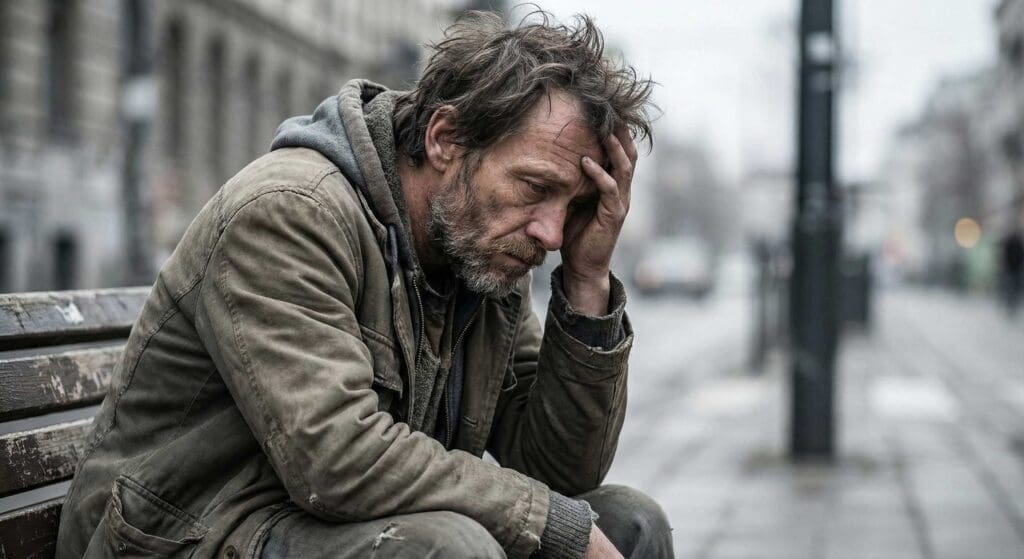Editor's Note: 2025 Update
This article was revised in 2025 to reflect authoritative information about the cycle of addiction and how it develops and repeats over time. All sources come from reputable research summaries or public health authorities, not commercial treatment facilities.
Understanding the Cycle of Addiction
Addiction is not a simple choice or a one‑time event. It is a complex and repeating pattern of thoughts, behaviors, and physical responses that keep a person stuck in harmful use of substances. The cycle of addiction describes how someone moves from early use to dependence and potentially back into use again unless effective support interrupts that pattern. Understanding this cycle helps individuals, families, and caregivers recognize warning signs and seek appropriate help.
Addiction involves changes in the brain’s reward system, learning circuits, and decision‑making processes, which makes the cycle persistent without intervention.
What Is the Cycle of Addiction?
The addiction cycle refers to a pattern that often includes stages of substance use that build on each other, leading to physical and psychological dependence. While the exact number of stages can vary depending on the model used, they all describe a progression from early use to deeper involvement and, in many cases, repeated relapse without support.
Here are the main stages commonly recognized in how addiction develops and repeats:
Initial Use
This stage begins when a person first tries a substance. It may be a one‑time experience or something that seems recreational, social, or harmless. Initial use alone does not guarantee addiction, but it starts the pattern of behavior that can move forward if use continues.
Regular Use
After initial exposure, some people begin using substances more frequently. This regular use becomes part of a routine or a way to cope with stress or emotions. Patterns of use start to form, and substance repetition reinforces the behavior in the brain’s reward system.
Tolerance and Dependence
With ongoing use, the brain becomes accustomed to the substance. The person may need larger amounts to achieve the same effect, a process called tolerance. Psychological or physical dependence develops, meaning the body and mind begin to rely on the substance to function normally.
Addiction
At this stage, substance use has a strong grip on behavior. The person may use substances despite negative consequences to health, relationships, work, or school. Cravings and compulsive drug‑seeking behaviors are common. This part of the cycle reflects a loss of control over substance use.
Relapse
Relapse refers to returning to substance use after a period of reduced use or sobriety. It is a frequent part of the addiction cycle and does not mean failure. Many people experience relapse as part of recovery before long‑term change takes hold. Relapse often occurs when triggers, stress, or learned behavioral cues overpower coping systems built during treatment or recovery.
These stages do not always occur in a strict sequence, and individuals may move back and forth between stages. Relapse can happen even after long periods of abstinence, especially when environmental cues or stress trigger cravings.
Why the Cycle Repeats
Addiction changes the brain in ways that reinforce repeated behavior. Repeated substance use increases dopamine activity in reward pathways, making the brain learn to associate substance use with pleasure and relief. Over time, natural rewards become less satisfying, and the substance becomes the focus of motivation and choice.
Triggers, such as stress, negative emotions, social cues, or environmental reminders, can activate intense cravings and restart the cycle even after periods of abstinence.
Relapse can be seen not as a failure but as part of the chronic nature of addiction, similar to how people with other chronic conditions may experience setbacks before long‑term success.

How Understanding the Cycle Helps Recovery
Breaking the cycle of addiction requires more than willpower. It often involves:
- Recognizing personal triggers that lead to craving
- Learning coping strategies to manage stress and emotions
- Developing a stable support network
- Using evidence‑based therapies that address behavior and brain response
These strategies aim to reduce the power of triggers and change the patterns that keep the cycle going. With support, people can learn healthier ways of responding and gradually reduce the likelihood of relapse.
Frequently Asked Questions
Is relapse always part of recovery?
Relapse can be common but is not inevitable. It often reflects the need for additional support or adjustments in care rather than personal failure.
Can the cycle of addiction be broken?
Yes. With appropriate support, therapy, coping strategies, and changes in environment and behavior, many people break free from repeated patterns and maintain long‑term recovery.
How long does the cycle of addiction last?
There is no set duration. For some it unfolds over years, for others months or days, depending on substance type, frequency of use, genetics, and life circumstances.
From Cycle to Recovery
Understanding the cycle of addiction is a critical first step in recovery. It helps clarify why substances become so hard to leave behind and why relapse can occur. With knowledge, strategic support, and compassionate care, people can learn to interrupt the cycle, build new habits, and pursue a healthier future.

